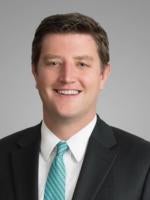On February 27, 2019, Tennessee-based holding company Vanguard Healthcare, LLC (“Vanguard”), agreed to pay over $18 million to settle a False Claims Act (“FCA”) action brought by the United States and the state of Tennessee for “grossly substandard nursing home services.” The settlement stems from allegations that five Vanguard-operated facilities failed to do the following: (1) administer medications as prescribed, (2) provide standard infection control resulting in urinary tract and wound infections, (3) attend to the basic nutrition and hygiene requirements of residents, (4) take prophylactic measures to prevent pressure ulcers, and (5) use physical restraints only when necessary. The FCA makes it illegal for anyone to submit claims (or cause claims to be submitted) for reimbursement to Medicare or Medicaid that are known to be false or based on false information. This settlement also resolves allegations that the Director of Operations, CEO, and several Vanguard companies caused false and/or fraudulent claims to be submitted. Both the CEO and Director of Operations agreed to pay $250,000, and Vanguard will enter into a chain-wide corporate integrity agreement. The $18 million settlement is the largest “worthless services” settlement to date in Tennessee.
“Worthless services” is not a defined term in the FCA, but it is a newer theory that has, in some cases, extended FCA applicability to issues related to quality of care. The theory has been increasingly employed in qui tamlawsuits alleging that a facility’s services are so deficient that it is tantamount to no services being provided. The rationale of the theory is that because providers are knowingly submitting claims for reimbursement for services with no medical value, the claims are considered false, thereby violating the FCA.
The Vanguard settlement comes at an interesting time. The National Health Care Fraud Takedowns of 2017 and 2018, the largest health care fraud enforcement actions in history, demonstrate the government’s continued commitment to combatting fraud in the health care industry. As part of these efforts, protecting elderly Americans, in particular, from fraudulent activity is a focus of the Trump administration. The focus on prosecuting those who capitalize on the vulnerability of this population was first made evident by the Elder Abuse Prevention and Prosecution Act of 2017. The two largest elder fraud enforcement actions in history followed in February 2018 and March 2019. Attorney General William Barr again reiterated the commitment to protecting aging Americans in the March 2019 remarks announcing the latest elder fraud sweep. In addition, addressing sub-standard care in skilled nursing facilities has remained an active item on the Department of Health and Human Services (HHS) Office of the Inspector General (OIG) Work Plan in recent years.
While enforcement actions in this space are on the rise, circuits remain split on the definition of the term “worthless.” The U.S. Court of Appeals for the Second Circuit was the first to find “worthless services” as a separate and distinct claim under the FCA, defining the term as the performance of services so deficient that, for all practical purposes, it is the equivalent to no service at all.[1] Although the Second Circuit defined this term in the context of a worthless product case,[2] the Third, Sixth, Eighth, and Ninth Circuits have generally accepted the Second Circuit’s definition of the term and apply it to quality of care in health care matters.[3] These circuits now generally look for qualitatively deficient care.
In 2014, the Seventh Circuit demanded a higher evidentiary burden for proving worthless services. The Seventh Circuit concluded that it is not sufficient to prove that services provided were worth less than what was expected; rather, it must be shown that the services were of absolutely no value. The court noted that because the facility in question was able to continue its operation after regular visits from government surveyors, the services provided could not have been so deficient to be considered worth no value.[4] Accordingly, the circuits are split as to whether diminished value or no value is the proper standard. However, it is unlikely that the current split is deep enough to warrant Supreme Court review.
In addition to the circuit split, district courts have struggled with two issues relating to the worthless services theory: (1) the scienter element of the FCA and (2) defining the point at which bundled services are considered worthless.[5]
-
Scienter: The overwhelming majority of facilities surveyed through the normal survey process are cited for deficiencies. Most cited facilities receive at least one quality of care deficiency. Despite how common such deficiencies are, it is difficult for those in the facility responsible for submitting claims—individuals typically not at all involved in patient care—to know when a service provided could be considered worthless. However, knowledge is more easily established when it involves a patient death or serious injury.[6]
-
The defining point of worthless bundled services: The aforementioned circuit split is largely due to the difficulty of applying a definition originally used in a worthless product case to quality of care cases. Federal payors reimburse nursing homes on a fixed per diem rate as opposed to reimbursing for each individual service provided to a patient. The frequency of quality of care deficiencies and this bundling of services make it difficult for courts to determine how many services must be deficient or of no value for a claim to be false. Employing a strict standard, a federal judge in California dismissed a worthless services claim because the plaintiff failed to allege that the defendant’s neglect of its patients was so severe that “for all practical purposes, the patients were receiving no room and board services or routine care at all.”[7] However, in denying a motion to dismiss, a federal judge in Kentucky decided that it is sufficient to show that “patients were not provided the quality of care which meets the statutory standard.”[8] A Mississippi district court found the following evidence to be sufficient to move forward under a worthless theory claim: inadequate staffing, failure to maintain hygiene standards, reuse of medical tubing, pervasive mold and pest issues, forcing patients to shower in groups, widespread neglect, failure to monitor patients at a heightened risk for wandering, and failure to safeguard medications.[9]
It is the provider’s responsibility to ensure that services provided meet the minimum statutory standard before filing a claim for federal reimbursement. Providers should be cognizant of internal compliance issues to ensure that services are not being underprovided. Providers should seek to remedy any issues internally, if possible, and follow HHS OIG self-disclosure protocol. Monitoring the quality of services provided through an effective and well-documented quality assurance program is critical to remaining compliant and defending against allegations of worthless services. Finally, providers should monitor for updates as this theory continues to evolve in the courts.
[1] United States ex rel. Mikes v. Straus, 274 F.3d 687 (2d Cir. 2001).
[2] Id.
[3] See also George Breen & Daniel Fundakowski, Quality of Care, Medical Necessity, and Worthless Services under the False Claims Act: Where Are We Headed Now?, Am. Health Lawyers Assoc. (2013), available athttps://www.healthlawyers.org/Events/Programs/Materials/Documents/PHY13/L_breen_article.pdf(explaining how courts view the theory of worthless services).
[4] United States ex rel. Absher v. Momence Meadows Nursing Ctr., Inc., 764 F.3d 699 (7th Cir. 2014).
[5] Richard Hughes IV, With a Worthless Services Hammer, Everything Looks Like a Nail: Litigating Quality of Care Under the False Claims Act, 37 J. Legal Med. 65 (2017).
[6] Id.
[7] United States ex rel. Swan v. Covenant Care, Inc., 279 F. Supp. 2d 1212, 1221 (E.D. Cal. 2002).
[8] United States v. Villaspring Health Care Ctr., Inc. 2011 U.S. Dist. LEXIS 145534, *16 (E.D. Ky.).
[9] United States ex rel. Acad. Health Ctr., Inc. v. Hyperion Found., Inc., 2014 U.S. Dist. LEXIS 93185 (S.D. Miss.).





 />i
/>i

